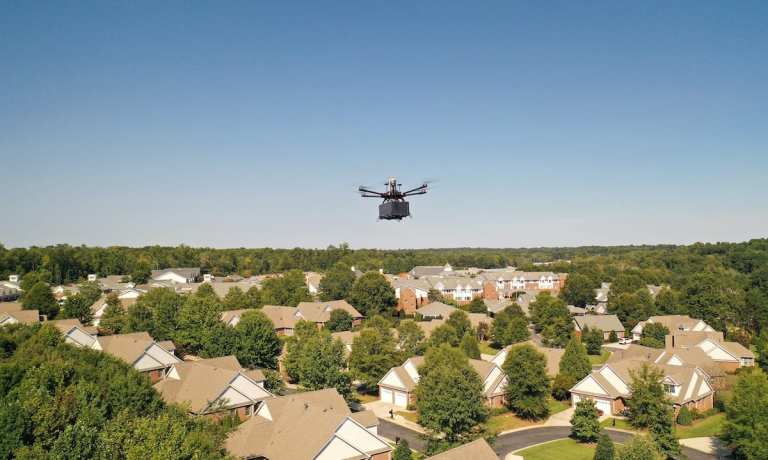
Meal delivery services are in hot water (even if the soup is arriving cold). Leading delivery services struggle to hire enough drivers to keep up with demand. DoorDash has attributed its losses in part to an “undersupply of Dashers,” and Uber has also publicly discussed demand outpacing capacity, given the number of drivers. Grubhub responded to consumers’ growing frustrations with the slow delivery times the labor shortage has occasioned by announcing on Monday (July 12) that it will offer Perks, redeemable for free food, if orders do not arrive on time.
With demand for meal delivery remaining elevated and labor proving a sticking point, businesses are challenged to consider alternatives to the traditional model of deploying gig couriers driving cars, bikes or scooters. In the past year, some restaurants — namely, El Pollo Loco, Starbucks and Pizza Hut — have been trying out delivery via drones, bringing orders to customers’ backyards.
“If we’re talking specifically about restaurant meals, there’s no better way,” Yariv Bash, co-founder and CEO of on-demand backyard drone delivery company Flytrex, told PYMNTS in an interview. He added that labor is too expensive, self-driving cars don’t “make sense in terms of volume and size and weight,” and sidewalk robots are too slow for meal delivery. He added that once the Federal Aviation Administration (FAA) approves backyard drone deliveries, they are “going to explode even faster than those mobility scooters that popped up in major cities in the past few years.”
While drone deliveries are promising, there will not be much movement on that front until the FAA gives the go-ahead. Consumers, meanwhile, may be ready. A survey conducted back in October of 2019 of 821 consumers living in an FAA-approved test site for unmanned aircraft systems (UAS, or drones) found that more than half of respondents reported liking drone delivery “a great deal,” and 87 percent reported liking these deliveries at least “a little.” Additionally, 89 percent of respondents reported that they were at least “somewhat likely” to try drone delivery if given the option.
These autonomous solutions may be especially important to fulfilling consumers’ on-demand food needs, given that, even outside of labor shortages, delivery services are struggling. Major cities are making fee caps permanent — the San Francisco Board of Supervisors made its 15 percent limit permanent in late June, and New York City is considering making its 20 percent cap permanent as well. Meanwhile, restaurants, tired of shouldering much of the financial burden of these deliveries, are seeking alternatives to the major players. Yet even the major players are still operating at a loss — in their most recent quarters, DoorDash and Grubhub both reported losses per share, and Uber reported negative adjusted EBITDA for its delivery segment.
Autonomous delivery could be key to capturing the growth in the food delivery sector. One recent report projects that the global food delivery market will hit around $127 billion in 2021, up more than 10 percent from $115 billion in 2020, despite the vaccine rollout bringing consumers back into restaurants for on-premise dining. Between 2020 and 2025, it is projected to grow 11 percent every year.